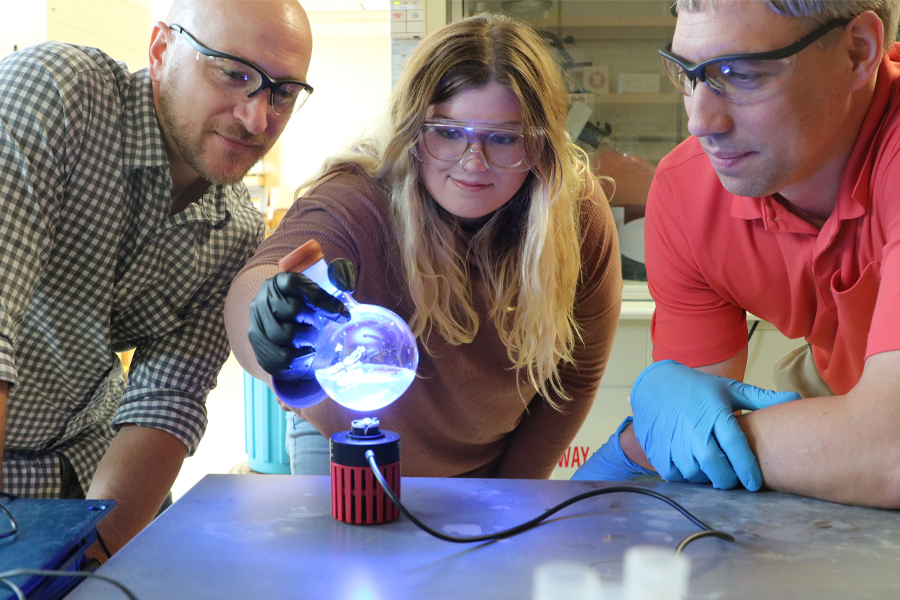
The best answers to scientific questions can often be found in nature.
A team of scientists from Florida State University and University of South Carolina have found a way to mimic photosynthesis — converting light energy into chemical fuel in the lab. Their study is published in the Journal of the American Chemical Society.
“One of the holy grails of alternative energy research is to use sunlight to make chemical bonds that can later be used as fuel,” said FSU Associate Professor of Chemistry Ken Hanson. “But making high-energy bonds is hard work and difficult to do with one packet of light energy or a photon.”
Hanson and University of South Carolina Associate Professor of Chemistry Aaron Vannucci worked together as postdoctoral associates a decade ago and had long wanted to pursue the idea of using simple molecules to mimic photosynthesis.
For this study, the researchers combined two molecules, a photoredox catalyst (i.e., a catalyst that moves electrons with light) and naphthol, a fluorescent organic compound. They then exposed the molecules to light. Each molecule absorbed a photon and then worked together to generate hydrogen fuel, mimicking a process referred to as the Z-Scheme in natural photosynthesis.
“This general idea is being pursued in research labs across the globe,” Vannucci said. “What makes our system unique is the molecule we use for the bond-forming reaction. Remarkably, despite being a simple and abundant molecule, naphthol absorbs light, accepts electrons and acts as the catalyst for hydrogen production.”
While the efficiency of the current system is rather modest at 5%, the team is now working to understand the details of how naphthol generates hydrogen without the need for expensive catalysts like platinum. They will use those insights to improve the energy conversion efficiency and expand its utility to other reactions.
In addition to Hanson and Vannucci, graduate and undergraduate students from both universities contributed to this research. Noelle Watson and Tristan Dilbeck from FSU and Pooja Ayare, Maizie Helton and Matthew Warner from University of South Carolina are co-authors on the study.
This research is supported by the National Science Foundation.




